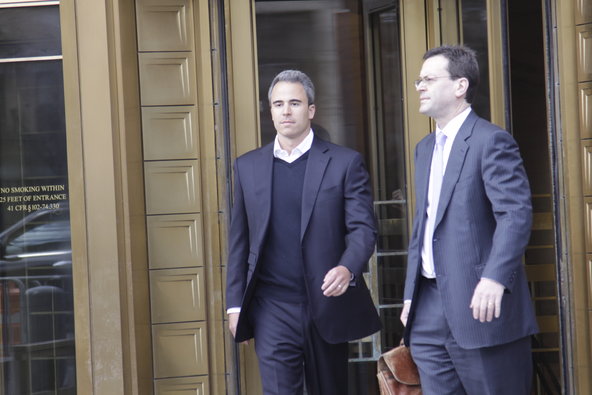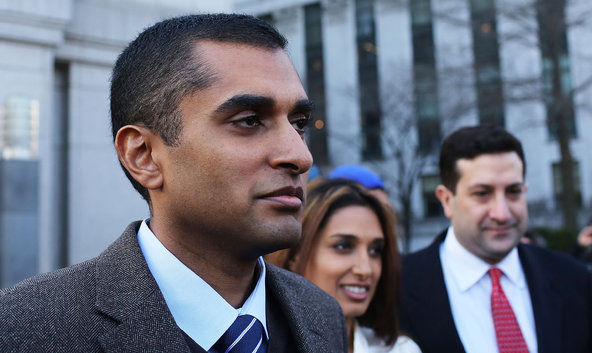Using traditional methods, as well as some that have never been tried on so large a scale, the Fed managed to nudge down a broad range of interest rates to extraordinarily low levels for a very long time. But earlier this month, Mr. Bernanke indicated that the time for winding down the grand experiment might be growing closer.
That has vexed the markets, and no wonder: the Fed’s adjustments have been affecting the wealth and the livelihood of millions of people.
Bond yields had begun rising at least partly in anticipation of Fed action, but they soared after Mr. Bernanke explained that if economic conditions kept improving, the central bank might begin to pare down its voracious bond-buying and eventually start to raise short-term rates. His words appeared to spill over into other asset classes: the stock market and gold prices fell sharply. Volatility returned to what had been quiet markets.
Last week, after several Fed officials said the markets had overreacted, some of the damage was undone, but not nearly all of it. “The reaction in the markets has been violent,” said Steven C. Huber, a portfolio manager at T. Rowe Price. “It’s caused a lot of people real pain.”
That interest rates have started to rise isn’t in itself surprising, he continued. “Many of us have been saying that would happen for a long time,” he said. “But the speed of the recent rise — that was startling, and the volatility has been rough. And it’s not clear how all of this will play out in the markets. In the short term, it’s meant real losses for many, many people.”
Bond mutual funds, which usually can be counted on for modest if unspectacular gains, have been dipping into negative territory for the year. Some investors have been selling their stakes. The probability that many fund investors will endure full-year losses “is probably as high as it’s been in a very long time,” said Francis M. Kinniry Jr., a principal in Vanguard’s Investment Strategy Group.
Through Thursday, the Vanguard Total Bond Market Index fund, which tracks the performance of the Barclays Aggregate Bond index, had a total return of minus 2.6 percent for the year, according to Morningstar. The T. Rowe Price Strategic Income fund, which Mr. Huber manages, was down 1.7 percent, and the Pimco Total Return fund was off 3 percent.
The markets have generally been reacting like addicts facing a possible cut-off of their favorite drug, said Michael Hartnett, chief global equity strategist at Bank of America Merrill Lynch Global Research. “The opiate of investors has been central bank liquidity,” he wrote in a note to clients last week, adding, “We believe liquidity withdrawal will not be painless and will create higher volatility.”
And in an e-mail, Mohamed A. El-Erian, the chief executive of Pimco, said that while there might be some pockets of value in the Treasury market, “investors should also note that markets remain vulnerable to technical overshoots and, thus, quite a bit of volatility.”
None of this looks very reassuring right now, yet in the long run, rising bond yields and an end to the Fed’s unconventional policies could be very good news. After all, yields have been so low mainly because the economy has been weak.
A continued climb in rates — either because of action by the Fed and other central banks or simply because of the markets’ internal dynamics — would presumably reflect market participants’ belief that the economy was strong enough to withstand higher rates. That could imply more jobs, rising productivity and, depending on how the larger economic pie is sliced, maybe even higher real incomes for working people.
What’s more, for several years, low rates have been extremely painful for people living on fixed incomes, making it harder for them to save enough for retirement, and increasing the risk of using up their nest eggs. I’ve written about that quandary in recent columns.
Eventually, higher rates could be a balm for many people. As James W. Paulsen, chief investment strategist at Wells Capital Management, put it: “We’ve got to remember that returning to some state of ‘normalcy’ is the goal of every economic recovery we’ve ever been through. That’s what’s beginning to take place. Getting from here to there will hurt, sure. But, frankly, the economic data has looked stronger, and the Fed has just been following the data. I think we can look at this as a celebratory milestone rather than as some kind of a scary event.”
Mr. Paulsen says that he expects the stock market to be stuck in a trading range for a while, but that he sees a good chance for the Standard Poor’s 500-stock index, now near 1,600, to close the year well above 1,700.
WHERE will bond rates end up? Virtually everyone agrees that the long-term trend is upward. But it’s not at all clear where rates will be going in the near future.
Mr. El-Erian says he believes that the Fed has been overly optimistic about the economy’s strength. “If the forecasts prove correct, which, unfortunately, we question given current economic realities, the Fed would have a positive reason to exit gradually from its prolonged highly experimental monetary policies, “ he said. “It is also apparent that the Fed is getting more concerned about the ‘costs and risks’ of its policy experimentation.”
Even discussing an eventual revision of its policy has been disruptive, he said. Managing an end to its grand experiment is likely to be even harder.
That’s why any effort to time the market — to truly anticipate the Fed’s moves, and the shifts in interest rates — is inherently dangerous. “Bonds are intended to be a buffer in a balanced portfolio, along with stocks,” Mr. Kinniry said. Holding on to bonds while yields rise and prices fall may be very painful, he said, but it’s still worthwhile. “Even at times like these,” he said, “it’s important to stay the course.”

Article source: http://www.nytimes.com/2013/06/30/your-money/tremors-from-the-feds-grand-experiment.html?partner=rss&emc=rss






